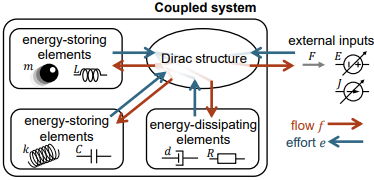2025-04-15 理化学研究所

図1 進化力学系ゲーム理論が解き明かす制度進化の仕組み
<関連情報>
- https://www.riken.jp/press/2025/20250415_2/index.html
- https://www.pnas.org/doi/10.1073/pnas.2500960122
進化的力学系ゲームにおける自己組織化機関 Self-organized institutions in evolutionary dynamical-systems games
Kenji Itao and Kunihiko Kaneko
Proceedings of the National Academy of Sciences Published:April 11, 2025
DOI:https://doi.org/10.1073/pnas.2500960122
Significance
How do communities self-organize to manage a changing environment? Answering this requires addressing the emergence of shared, context-dependent criteria for “cooperativeness.” Existing game-theoretic frameworks with prescribed cooperation and defection face challenges in explaining it. Here, we introduce evolutionary dynamical-systems game theory, which models the interdependent dynamics of game actions and naturally growing resources, alongside the evolution of cognitive frameworks for decision-making. In this model, the same action can serve as either cooperation, defection, or punishment, depending on the evolved cognitive frameworks and the context of environmental and players’ states. The emergent institutions generate temporal regularity in social and environmental dynamics. By establishing general game-theoretic concepts, this study offers a conceptual framework to elucidate the emergence and transition of institutions.
Abstract
Social institutions are systems of shared norms and rules that regulate people’s behaviors, often emerging without external enforcement. They provide criteria to distinguish cooperation from defection and establish rules to sustain cooperation, shaped through long-term trial and error. While principles for successful institutions have been proposed, the mechanisms underlying their emergence remain poorly understood. To address this, we introduce the evolutionary dynamical-systems game theory that couples game actions with environmental dynamics and explores the evolution of cognitive frameworks for decision-making. We analyze a minimal model of common-pool resource management, where resources grow naturally and are harvested. Players use decision-making functions to determine whether to harvest at each step, based on environmental and peer monitoring. After evolution, decision-making functions enable players to detect selfish harvesting and punish it by overharvesting, which degrades the environment. This process leads to the self-organization of norms that classify harvesting actions as cooperative, defective, or punitive. The emergent norms for “cooperativeness” and rules of punishment serve as institutions. The environmental and players’ states converge to distinct modes characterized by limit-cycle attractors, representing temporal regularities in socio-ecological systems. These modes remain stable despite slight variations in individual decision-making, illustrating the stability of institutions. We measure evolutionary robustness of decision-making functions, defined as the capacity to keep dominance against invasion. It is revealed that plasticity, the ability to adjust actions to cope with diverse opponents, allows for such robustness. This work introduces foundational concepts in evolutionary dynamical-systems games and elucidates the mechanisms underlying the self-organization of social institutions.



